Top speed 381 km/h Length 8.84 m Unit cost 5,000–5,000 GBP (1934) Engine type de Havilland Gipsy Six | Wingspan 13 m Range 4,710 km First flight 1934 | |
Rc de havilland dh 88 comet flight crash and burn
The de Havilland DH.88 Comet was a British twin-engined aircraft designed for the 1934 MacRobertson Air Race. Three examples took part in the race and one of them won. The type set many aviation records during and afterwards some were used as mail planes.
Contents
Airventure 2009 de havilland dh 88 comet racer
Background
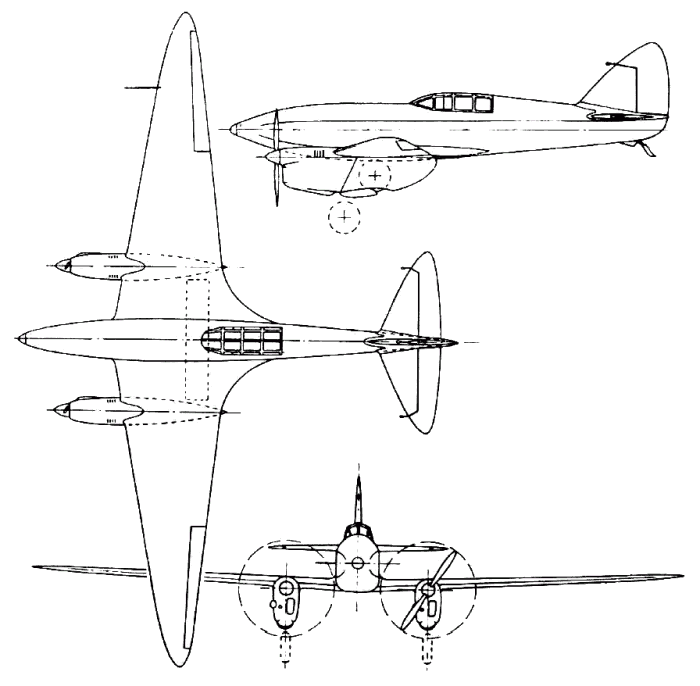
The MacRobertson International Air Race was a race from England to Melbourne held in October 1934 to celebrate the 100th anniversary of the State of Victoria. Sponsored by Macpherson Robertson, an Australian confectionary manufacturer, the race was announced in 1933. Despite previous British air racing successes, culminating in 1931 in the outright winning of the Schneider Trophy, there was no British aeroplane capable of putting up a challenge over the MacRobertson course with its long overland stages. Geoffrey de Havilland was determined that the race should be won by a British aircraft. It was estimated that development of a suitable aircraft would cost around £50,000 Since there was no prospect of recouping this through a large production run and equally it was not considered likely that there would be anybody prepared to purchase an example at anything approaching its true cost, the De Havilland board therefore decided to subsidise the project, hoping that it would both add to the company's prestige and also provide benefits resulting from the research involved.
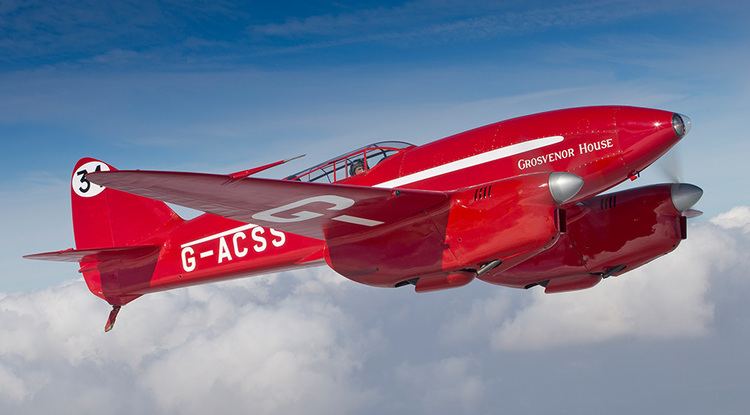
Accordingly, it was announced that an aircraft would be sold for £5,000 (approximately equivalent to £320,127 in 2015, when adjusted for inflation) to anybody placing an order before 28 February, with delivery guaranteed in September. Three aircraft were ordered one by Jim Mollison, to be flown by himself and his wife Amy; one by the racing motorist Bernard Rubin; and a third by A. O. Edwards, the managing director of the Grosvenor House hotel.
Design and development
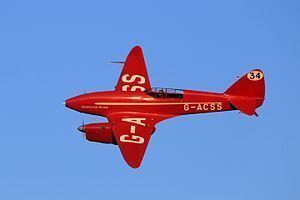
De Havilland initially intended to produce a twin-engined development of the DH.71. However the design team, led by A. E. Hagg, soon determined to produce a more innovative design, a cantilever monoplane with an enclosed cockpit, retractable undercarriage and flaps. It was also decided that in order to achieve take-off at a high all-up weight combined with a satisfactory high-speed cruise it would be necessary to fit variable-pitch propellers.
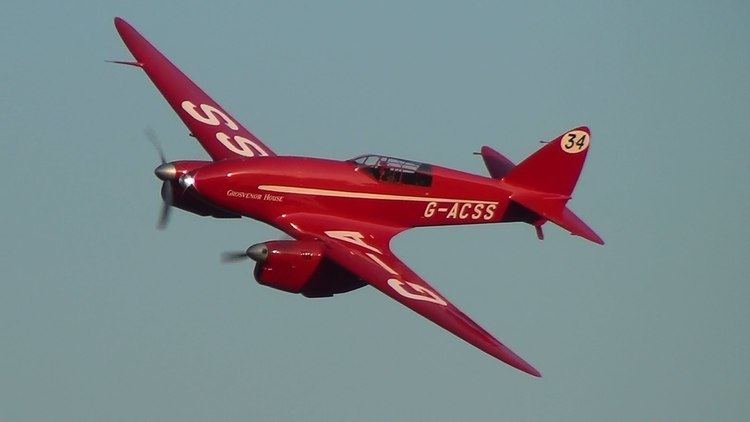
The resultant design was a low-wing two-seat monoplane with a tapered high aspect ratio wing powered by two specially tuned Gipsy Six engines. Construction was almost entirely of wood, metal being used for components such as the engine bearers, the undercarriage, the engine cowlings and the wing root fairings. The sheet metal parts used a magnesium-aluminium alloy.
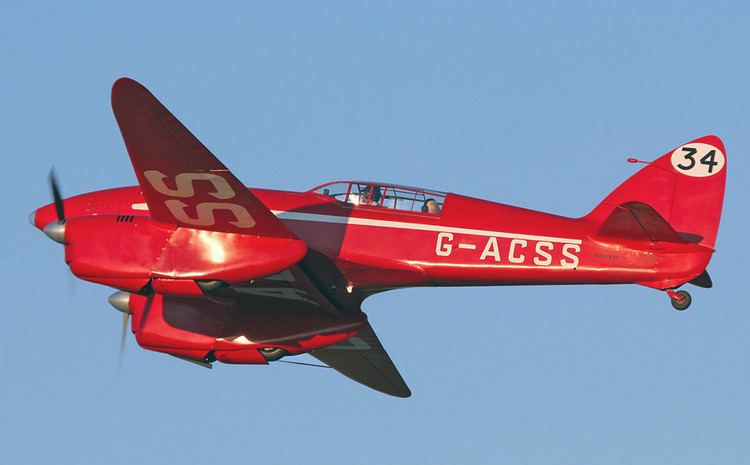
Aerodynamic efficiency was the design priority and it was therefore decided to use a thin wing using the RAF34 section. This was not thick enough to contain spars of sufficient depth to carry the flight loads and so an innovative structural design in which the wing skin carried most of the loads was evolved. Most of the wing was covered using of two layers of 2 inch (50mm) wide spruce planking laid diagonally across the wing, which was built as a single assembly around three box-spars located at 21, 40 and 65 percent chord: there was an intermediate spruce stringer between each pair of spars to prevent buckling. The ribs were made of birch ply and spruce. The overall thickness of the planking reduced over the span of the wing, from 0.5 in (12.5mm) at the root to 0.14in (3.5mm); the outboard 6 ft (1.5m) were skinned with various thicknesses of ply because of the difficulty of machining spruce planking of less than 0.07in thickness. The leading edge, forward of the front spar, was also ply covered. The centre section was reinforced with two additional layers of 0.07 spruce. This method of construction was made possible only by the recent development of high-strength synthetic bonding resins and its success took many in the industry by surprise. Manually operated split trailing-edge flaps were fitted, and the controls surfaces consisted of differentially operated Frise ailerons which were mass balanced by lead strips within their leading edges. Rudder and elevators had horn mass balances. In order to prove the wing design a half-scale model wing was built and tested to destruction.
The fuselage was built principally from plywood over spruce longerons, with the upper and lower forward section built up from spruce planking in order to achieve the necessary compound curves. As with the wing, the strength of the structure depended on the skin. Fuel was carried in three tanks in the fuselage, two over the wing in front of the cockpit and the third, of only 20 gal capacity, behind it; this could be used to alter the aircraft's trim. The pilot and navigator were seated in tandem behind the wing; dual controls were fitted, but only one set of flight instruments. The undercarriage retracted backwards into the engine nacelles and was operated manually, requiring 14 turns of a large handwheel located on the right hand side of the cockpit. A large landing light was fitted in the nose.
The engines were uprated versions of the newly developed Gipsy Six, tuned for optimum performance with a higher compression ratio. The DH.88 could maintain altitude up to 4,000 feet (1,200 m) on one engine. The propellers were two-position variable pitch, made by French manufacturer Ratier, manually set to fine before takeoff using a bicycle pump, and changed automatically to coarse by a pressure sensor. A drawback to the Ratier system was that the propellers could not be reset to fine pitch except on the ground. With de Havilland managing to meet the challenging production schedule, testing of the DH.88 began six weeks before the start date of the race.
MacRobertson Race
On the day of the race start, the three distinctively coloured aircraft took their places among 17 other entrants at RAF Mildenhall, a Royal Air Force station in Suffolk, England. These ranged from a new Douglas DC-2 airliner to two converted Fairey Fox bombers.
Black Magic
First to take off at 6.30 a.m. on 20 October were Jim and Amy Mollison in their own G-ACSP Black Magic. They made a faultless journey to Baghdad, and reached Karachi at around 10 a.m. on the second race day, setting a new England-India record. Problems began for the Mollisons when their landing gear failed to retract, and after returning to Karachi for repairs, they were again delayed by an inability to navigate at night.
Further problems followed when they made an unscheduled refuelling stop at Jobbolpore but found no aviation fuel. Running instead on fuel provided by the local bus company, a piston seized and an oil line ruptured. They flew on to Allahabad and retired.
Grosvenor House
G-ACSS, painted red, was the property of Mr A. O. Edwards and was named Grosvenor House after the hotel which he managed. The crew were C. W. A. Scott and Tom Campbell Black. When the Mollisons ran into problems at Karachi, Scott and Campbell Black took over the lead and were first into Allahabad. Despite a severe storm over the Bay of Bengal they reached Singapore safely, eight hours ahead of the DC-2.
They took off for Darwin, but over the Timor Sea lost power in the port engine when the oil pressure dropped to zero. Repairs at Darwin got them going again, although continuing oil warnings caused them to fly the last two legs with one engine throttled back. Their lead was unassailable despite this, and after the final mandatory stop and more engine work at Charleville they flew on to cross the finish line at Flemington Racecourse at 3.33 p.m. (local time) on 23 October. Their official time was 71 hours 18 seconds.
Records set by G-ACSS 'Grosvenor House'
G-ACSR
The third Comet, G-ACSR had been paid for by racing driver Bernard Rubin and was flown by Owen Cathcart Jones and Ken Waller. They had to make a second unscheduled stop at Baghdad after they found that they had had a serious oil leak. They were forced to delay for repairs which were carried out by T.J.Holmes, an engineer from the Royal Air Force. They caught up with the Mollisons at Karachi. They were the fourth aircraft to reach Melbourne, in a time of 108 h 13 min 45 s. Cathcart Jones and Waller promptly collected film of the Australian stages of the race and set off to carry it back to Britain. Their return time of 13½ days set a new record.
Later use
Grosvenor House was taken charge of by the Air Ministry and flown to Martlesham Heath for evaluation. Repainted silver and given the military serial K-5084 it made several flights before being written off and sold for scrap after a heavy landing. It was subsequently sold on, rebuilt and fitted with Gypsy Six series II engines and a castoring tailwheel, in which form it made several race and record attempts under various names. It claimed fourth place in the 1937 Istres-Damascus-Paris race, and later the same year lowered the out-and-home record to the Cape to 15 days 17 hours. In March 1938, Arthur Edmond Clouston and Victor Anthony Ricketts made a return trip to New Zealand covering 26,450 mi (42,570 km) in 10 days 21 hours 22 minutes.
G-ACSR was renamed Reine Astrid and flew the Christmas mail from Brussels to Leopoldville in the Belgian Congo in 1934. It was then sold to the French government as F-ANPY and set a Croydon-Le Bourget record of 52 minutes on 5 July 1935. It subsequently made Paris–Casablanca and Paris—Algiers high-speed proving flights. F-ANPY was destroyed in a hangar fire, alongside F-ANPZ (see below), at Istres in France in June 1940.
Black Magic was sold to Portugal for a projected flight from Lisbon to Rio de Janeiro. Re-registered CS-AAJ and renamed Salazar it made various flights from London to Lisbon, setting a time of 5 hr, 17 min in July 1937. It was re-discovered in a dilapidated state in Portugal in 1979 and is currently undergoing restoration in Derby, England.
Additional Comets
Following the French government's acquisition of F-ANPY (see above), they ordered a fourth Comet, F-ANPZ, with a mail compartment in the nose. One was destroyed in a hangar fire at Istres in France in June 1940.
The fifth and last Comet, registered G-ADEF and named Boomerang, was built for Cyril Nicholson. It was piloted by Tom Campbell Black and J. C. McArthur in an attempt on the London-Cape Town record. It reached Cairo in a record 11 hr, 18 min, but the Cape Town attempt was abandoned due to oil trouble. G-ADEF crashed in Sudan on 22 September 1935, the crew escaping by parachute.
Surviving aircraft
G-ACSS Grosvenor House has been restored to flying condition as it was in the MacRobertson race, and is housed at the Shuttleworth Collection at Old Warden in England.
CS-AAJ has been rediscovered after being lost for more than 40 years in Portugal and is currently under restoration to its original identity as Black Magic, hopefully to flying condition, by the Comet Racer Project Group based at Derby Airfield in England.
Airworthy replicas
An airworthy full-scale replica of the DH.88 Comet was built in 1993 by Bill Turner of Repeat Aircraft at Flabob Airport in Rubidoux, California. It was built for Thomas W. Wathen of Santa Barbara, CA. N88XD flies wearing the full colours and registration of G-ACSS Grosvenor House.
Another example, started in the USA, is under steady construction by the Croydon Aircraft Company at Old Mandeville Airfield, near Gore, New Zealand.
Operators
United Kingdom
Specifications
Data from De Havilland Aircraft since 1909
General characteristics
Performance
In popular culture
In the film Planes from DisneyToon Studios, the British character Bulldog is based on the de Havilland DH.88 and voiced by John Cleese.
In the Dutch aviation comics series "January Jones" the title heroine, a U.S. racing pilot in the 1930s, flies and owns a de Havilland DH.88, usually indicated as (De Havilland) Comet. Its red-with-white colour and #43 resemble Grosvenor House. This series has been published in Dutch, French, Danish, Norwegian, Finnish, Portuguese, Catalan, Spanish and German.
The comic strip "The Phantom" began a storyline on 2 July 2016 which featured DH.88 F-ANPZ, describing it as restored after a hangar fire in France in June 1940.
